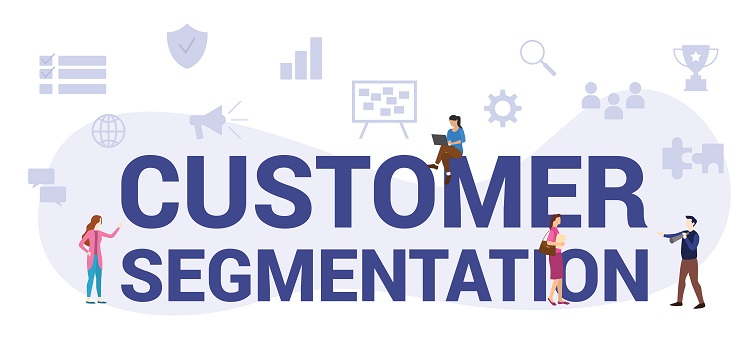In today’s complex business landscape, companies need to have effective strategies to reach their target markets. One such strategy is customer segmentation, which has emerged as a crucial aspect of modern marketing. Segmenting a large customer base into smaller, more targeted groups helps companies create personalized marketing campaigns that cater to the unique needs and preferences of each segment.
The purpose of customer segmentation
The purpose of customer segmentation is to divide a large customer base into smaller groups with similar characteristics and behaviors. This strategy allows companies to refine marketing efforts and offer products and services to specific groups of customers who are more likely to respond positively to these offerings.
For instance, a fashion brand may divide its customer base into segments such as high-income customers, fashion-conscious customers, and customers interested in sustainability. This would allow the brand to tailor its marketing efforts to each group, such as showcasing high-end designer collections to high-income customers, featuring eco-friendly clothing to customers who value sustainability, and promoting trendy clothing to those who are fashion-conscious.
Evaluating the customer segmentation model
To evaluate a customer segmentation model with the marketing and sales team, you can follow these steps:
1. Identify the key performance indicators (KPIs) for each segment.
2. Analyze customer behavior data, such as purchase history, web browsing data, social media activity, and other data sources, to identify patterns and characteristics that define each segment.
3. Measure the effectiveness of your marketing campaigns targeting each segment.
4. Use this data to refine your segmentation model and make data-driven decisions about marketing strategies, product development, and customer service.
Providing actionable insights
One key factor that makes customer segmentation effective is that it provides actionable insights that help teams target specific customer groups more effectively. By segmenting customers based on their behavior, characteristics, and preferences, teams can create more personalized and relevant product offerings, promotional campaigns, and customer experiences.
Creating personalized marketing campaigns
Use customer segmentation to create personalized marketing campaigns that cater to the unique needs of each segment. For example, a company that specializes in home appliances may segment its customers based on their household income levels, age, and lifestyles. This segmentation would help the company create targeted campaigns such as offering discounts on high-end appliances to high-income consumers, promoting easy-to-use appliances to older customers, and showcasing environmentally friendly appliances to eco-conscious customers.
Understanding Business Objectives
Before evaluating your customer segmentation model, ensure that you have a clear understanding of your business objectives and what you want to achieve through segmentation. This will help you develop a segmentation model that aligns with your overarching business goals and objectives.
Experimenting with different clustering algorithms
Experiment with different clustering algorithms, such as K-means, hierarchical clustering, and DBSCAN, to find the one that works best for your data and business objectives. This will help you identify the most optimal segmentation model for your business needs.
Tuning hyperparameters
Tune the hyperparameters of your chosen clustering algorithm to improve its performance. You can do this by adjusting values such as the number of clusters, similarity threshold, and distance functions to optimize the accuracy and effectiveness of the model.
Enhancing the model
Enhance your model by creating new features or transforming existing ones. This may involve incorporating new data sources or identifying new customer behavior patterns that are relevant to your target markets. Additionally, you may refine the segmentation criteria based on feedback from customers or changes in the market landscape.
Creating visualizations
Create visualizations to help you better understand the resulting customer segments and evaluate the performance of your model. Visual representations such as charts and graphs can help you gain insights into customer behaviors, preferences, and purchase patterns.
In conclusion, customer segmentation is a powerful tool that can help companies reach their target markets more effectively. By dividing a large customer base into smaller groups with similar characteristics, teams can create personalized marketing campaigns, improve customer engagement and satisfaction, and increase sales revenue. Evaluating the customer segmentation model is an ongoing process that requires data-driven decision-making and a solid understanding of business objectives. With the right clustering algorithms, tuning of hyperparameters, and visualization tools, companies can leverage customer segmentation to achieve long-term success in the marketplace.

